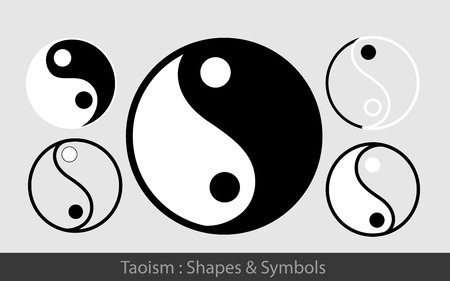Understanding Feng Shui: A British Perspective
Feng Shui, the ancient Chinese art of harmonising individuals with their environment, has long been associated with serene gardens and thoughtfully arranged homes. Yet, its core principles offer a unique synergy when embraced within British boardrooms—spaces steeped in tradition, heritage, and a keen appreciation for order. At its heart, Feng Shui is about balance, flow, and intentional design. These concepts resonate deeply with classic British values: respect for history, an eye for craftsmanship, and a preference for functional elegance over ostentation.
The British approach to workspace often marries timeless architecture with contemporary business needs. Think of grand Georgian meeting rooms bathed in natural light or minimalist modern offices set within restored Victorian warehouses. Feng Shui’s focus on energy flow (Qi), strategic placement, and harmony between people and their environment mirrors the British penchant for thoughtful spatial planning and understated sophistication. As British businesses seek to foster well-being and productivity while honouring their cultural legacy, integrating Feng Shui becomes more than an aesthetic choice—it becomes a meaningful strategy to cultivate success.
Designing Boardrooms for Harmony and Productivity
When it comes to British boardrooms, where tradition meets modern business strategy, the principles of Feng Shui offer more than just aesthetic value—they provide a blueprint for spatial harmony and productivity. Applying these Eastern philosophies with sensitivity to British culture can result in dynamic environments that support both collaboration and clear decision-making. Here’s how you can practically arrange your boardroom to optimise energy flow while respecting the distinguished character of UK corporate settings.
Optimising Energy Flow: Layout Essentials
The placement of furniture and participants in a boardroom plays a pivotal role in channelling positive energy—or “qi”—throughout the space. Begin by positioning the main table so that it is not directly in line with the door but within clear sight of it, embodying the command position. This allows those leading meetings to feel secure and in control, a subtle nod to both Feng Shui wisdom and British preference for order and privacy. Avoid sharp angles pointing towards seats, as these can create discomfort and impede open discussion.
Boardroom Layout Recommendations
| Element | Feng Shui Guidance | British Adaptation |
|---|---|---|
| Main Table | Rectangular or oval for balanced energy; avoid placing at an angle | Traditional solid wood tables work well; place centrally for gravitas |
| Seating Arrangement | Ensure all participants face each other; avoid backs to doors/windows | Classic high-back chairs in a circular or horseshoe layout foster inclusion |
| Lighting | Natural light preferred; supplement with soft, even artificial lighting | Sash windows with adjustable blinds; elegant lamps for evening meetings |
| Décor & Colour Palette | Earth tones for stability; avoid excessive red or black | Bespoke British art, subtle blues and greens reflect both local heritage and calmness |
| Technology Placement | Keep electronics tidy; conceal wires to maintain energy flow | Utilise integrated AV solutions within classic cabinetry or panelling |
Encouraging Collaboration & Enhancing Decision-Making
A harmonious environment sets the tone for constructive dialogue. In British boardrooms, where respect for tradition often coexists with progressive thinking, seating arrangements should reinforce equality and encourage every voice to be heard. Consider placing key decision-makers in positions of prominence—typically facing the entrance—but ensure all attendees have unobstructed views of each other to promote transparency. Incorporate elements such as living plants or discreet water features near windows to invigorate creativity while maintaining a professional atmosphere.
Cultural Sensitivity Meets Practicality
Blending Feng Shui principles with quintessentially British design doesn’t mean sacrificing formality or function. Rather, it’s about curating a space where energy flows freely, decisions are made confidently, and every participant feels valued—a true hallmark of modern British boardroom culture.

3. Modern Aesthetics Meets Classic Principles
In the heart of British boardrooms, a new design narrative is unfolding—one where contemporary aesthetics harmoniously intertwine with ancient Feng Shui principles. British business leaders, renowned for their appreciation of heritage and innovation, are now embracing spaces that not only look striking but also foster wellbeing and productivity. The fusion begins with careful consideration of layout: open-plan meeting areas, flooded with natural light, reflect both the modern British penchant for transparency and the Feng Shui belief in energy flow. Selecting locally crafted furnishings made from sustainable materials honours both UK craftsmanship and the elemental balance central to Feng Shui. Neutral palettes, so favoured in British interiors, become the backdrop for thoughtful pops of colour—echoing Feng Shuis use of accent hues to enhance specific energies within a room. Every detail, from the placement of technology to the integration of greenery, is curated with intention. Plants such as English ivy or peace lilies not only purify air but embody growth and renewal, aligning with both eco-conscious British values and classic Eastern wisdom. This seamless blend results in boardrooms that exude sophistication while subtly nurturing harmony and strategic focus—a true reflection of how tradition and modernity can elevate the professional environment.
4. Integrating Local Culture and Symbolism
Creating a harmonious British boardroom through Feng Shui is not simply about rearranging furniture or selecting auspicious colours; it’s also about weaving the rich tapestry of British culture into the very fabric of the space. When iconic British symbols, traditional hues, and classic materials are thoughtfully blended with Feng Shui principles, the result is an environment that exudes both a strong sense of place and dynamic business purpose.
Infusing Iconic British Symbols
Incorporating recognisable British motifs—such as the Union Jack, oak leaves, or even subtle nods to historic architecture—can energise a boardroom while grounding it in local identity. For instance, artwork depicting classic London landmarks or subtly patterned textiles inspired by William Morris can enhance the Wood element’s vitality and creativity without overpowering the professional setting.
Colour Palette: A Fusion of Heritage and Harmony
British interiors are known for their restrained elegance, often employing deep blues, heritage greens, and muted earth tones. These colours align beautifully with Feng Shui’s elemental theory, supporting both productivity and well-being. The table below demonstrates how traditional British colours can be paired with their corresponding Feng Shui elements:
| Traditional British Colour | Feng Shui Element | Suggested Application |
|---|---|---|
| Royal Blue | Water | Carpets, accent walls for communication flow |
| Forest Green | Wood | Soft furnishings to inspire growth and renewal |
| Burgundy/Claret | Fire | Statement chairs for leadership energy |
| Cream/Stone | Earth | Main wall colour to promote stability |
Selecting Materials: Heritage Meets Energy Flow
The choice of materials further bridges tradition and Feng Shui intention. Rich mahogany or oak tables reflect British craftsmanship while contributing to a strong Wood element. Brushed brass fixtures evoke history and prosperity (Metal element), whereas natural wool or linen upholstery aligns with Earth for grounded decision-making. A careful balance ensures each material resonates with both cultural pride and positive Qi movement.
Cultural Placement: Positioning with Purpose
Strategic placement of local symbols matters just as much as their selection. For example, placing an antique clock—a quintessentially British feature—in the North (Career) sector supports forward momentum, while a framed cricket bat in the East (Health) sector invokes teamwork and vitality. This thoughtful curation transforms a standard boardroom into a purposeful space where tradition empowers innovation.
5. Wellbeing and Inclusivity in the Workplace
Creating Spaces That Nurture Every Individual
Integrating Feng Shui principles into British boardrooms goes beyond visual harmony—it’s about fostering a culture where everyone feels valued. In the UK, the emphasis on employee wellbeing and inclusivity aligns naturally with Feng Shui’s holistic approach to space. By considering the energy flow (or “qi”) within meeting rooms and communal areas, businesses can design environments that uplift morale, reduce stress, and encourage open communication. Simple adjustments—like ensuring clear sightlines, maximising natural light, or arranging seating in a circular fashion—can break down hierarchical barriers and invite participation from all voices.
The Power of Colour and Texture
British workplaces often celebrate diversity through thoughtful design choices. Drawing on Feng Shui wisdom, incorporating calming blues and greens can promote tranquillity, while warm accents may evoke feelings of welcome and unity. Layering textures—woollen throws, soft rugs, or even a touch of British tweed—adds comfort and supports neurodiversity by catering to different sensory needs. Such details create an environment where employees feel both cared for and empowered to bring their whole selves to work.
A Foundation for Diversity and Belonging
True inclusivity is built into the very fabric of a space. Feng Shui encourages adaptability: modular furniture allows for flexible arrangements during team discussions or quiet moments, ensuring accessibility for all abilities. Integrating elements like plants or artwork from various cultures reflects the UK’s multicultural heritage and makes everyone feel at home. Through these mindful enhancements, British boardrooms become more than functional—they transform into places where wellbeing thrives and every individual finds belonging.
6. Case Studies: Successful British Boardrooms
Integrating Feng Shui principles within the context of British business culture may seem unconventional at first, but a growing number of UK companies have embraced this Eastern philosophy to invigorate their executive spaces and enhance performance. By blending tradition with modern business sensibilities, these organisations have set compelling precedents for others to follow.
HSBC: Harmonising Global Influence with Local Identity
As one of Britain’s most prominent multinational banks, HSBC has consistently demonstrated a keen awareness of space, flow, and energy in its London headquarters. The boardroom is thoughtfully arranged to promote open communication and clarity—key tenets of Feng Shui. Natural light floods the room, while round tables foster inclusivity and diminish hierarchical barriers, embodying both Chinese wisdom and British egalitarianism.
Unilever: Sustainable Spaces with Positive Energy
Unilever’s commitment to sustainability extends beyond products to its executive environments. Their boardrooms feature plants, eco-friendly materials, and water elements that symbolise growth and prosperity in Feng Shui. These design choices not only create a visually appealing space but also promote wellbeing and productivity among leaders—an approach perfectly attuned to both British environmental values and Eastern philosophies.
Barclays: Modern Elegance Meets Traditional Wisdom
At Barclays’ Canary Wharf offices, the boardroom design balances modern minimalism with subtle nods to Feng Shui. Strategic placement of seating ensures that every leader has a commanding view of the entrance—a classic principle for welcoming positive energy and opportunities. Thoughtful use of colour palettes, incorporating calming blues and earthy tones, further cultivates an atmosphere where decision-makers feel grounded yet inspired.
Lessons for Future Boardrooms
These case studies reveal that when British companies thoughtfully incorporate Feng Shui into their boardrooms, they achieve more than aesthetic appeal—they foster spaces where collaboration thrives, ideas flow freely, and leadership flourishes. By respecting both heritage and innovation, these organisations demonstrate how ancient principles can seamlessly align with contemporary business objectives in the UK.


